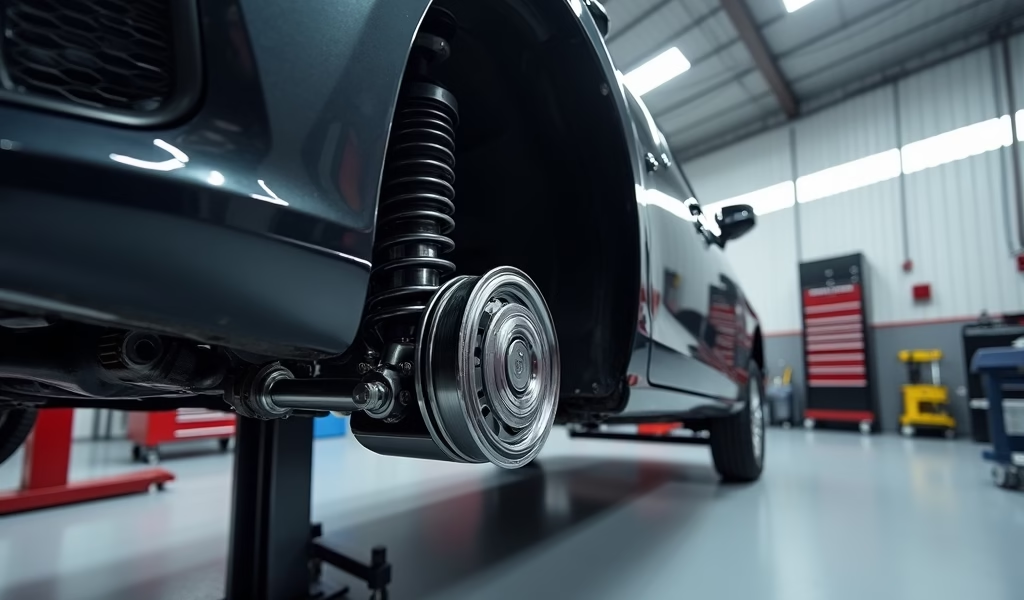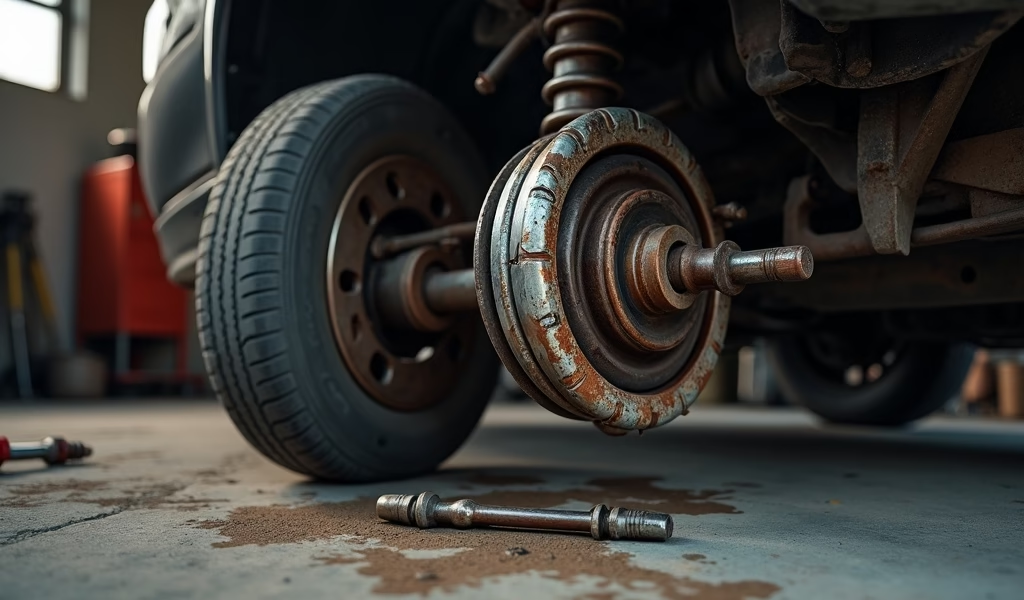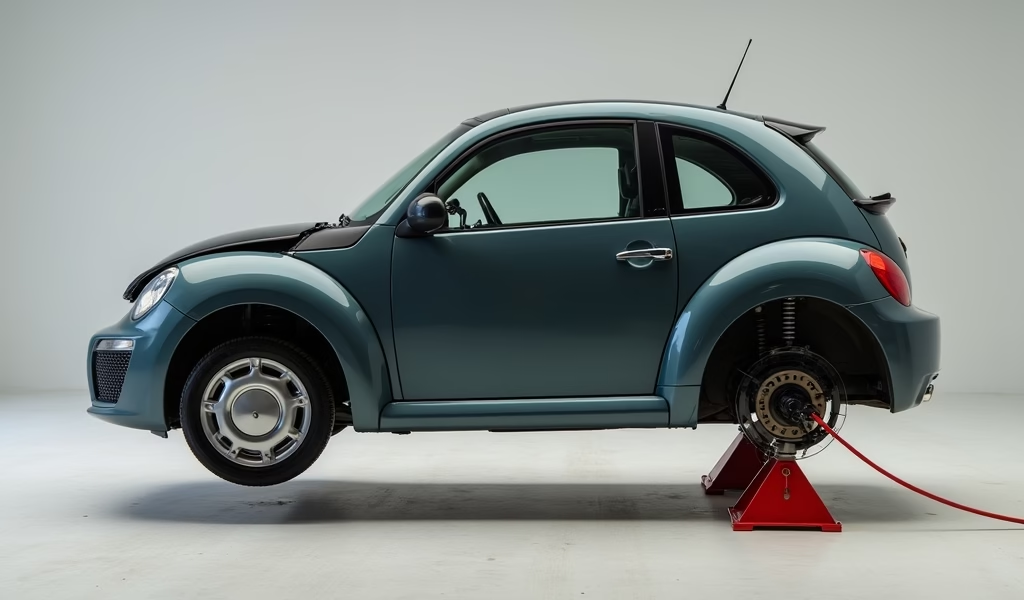Overview
This DIY guide provides complete instructions for replacing MacPherson strut bearings, covering everything from identifying when replacement is needed and gathering necessary tools to step-by-step installation procedures and post-replacement testing. The article emphasizes safety precautions (particularly when using spring compressors), explains how properly functioning strut bearings improve vehicle handling and comfort, and notes that this repair can save $200-400 in labor costs compared to professional service.
Table of Contents
- Understanding MacPherson Strut Bearings
- When to Replace Strut Bearings
- Tools and Materials Needed
- Preparation Steps
- Step-by-Step Replacement Guide
- Testing and Troubleshooting
- Maintenance Tips
- Conclusion
- Frequently Asked Questions
Understanding MacPherson Strut Bearings
Let’s talk about MacPherson strut bearings – those unsung heroes of your vehicle’s suspension system that quietly do their job until they don’t. As a mechanic with 20 years under my belt, I’ve replaced hundreds of these components, and I’m here to guide you through doing it yourself.
MacPherson strut bearings (sometimes called strut mounts) sit at the top of your strut assembly, connecting the suspension to your vehicle’s body. They serve two critical functions: allowing the strut to rotate when steering while simultaneously dampening vibrations from the road. Think of them as the mediators between your car’s suspension and body.
These bearings consist of a metal plate with a rubber insulator and ball bearing assembly. The design is ingenious but not immortal. Over time, the constant movement, weight bearing, and exposure to the elements cause them to wear out.
When functioning properly, you’ll never notice your strut bearings. But when they start failing, your driving experience changes dramatically. The good news? Replacing them yourself can save you $200-400 in labor costs at the shop.
When to Replace Strut Bearings
Your vehicle has a way of talking to you when something’s wrong, and bad strut bearings are quite the conversationalists. Here are the telltale signs it’s time for replacement:
- Knocking or clunking noises when turning the steering wheel
- Unusual sounds when driving over bumps or dips
- Steering wheel vibration or shimmy, especially during turns
- Increased steering effort or stiffness
- Uneven or premature tire wear patterns
- Excessive bouncing after hitting bumps
In my experience, most MacPherson strut bearings last between 50,000 and 80,000 miles, but this varies widely based on driving conditions, vehicle weight, and quality of the original parts. If your vehicle is approaching this mileage and you notice any of these symptoms, it’s probably time for a replacement.
Don’t ignore these warning signs! Continuing to drive with failing strut bearings can lead to damage to other suspension components and create unsafe driving conditions. That small bearing plays a bigger role in your safety than you might think.

Tools and Materials Needed
Before you start tearing into your suspension system, let’s make sure you’ve got everything you need. Nothing worse than being halfway through a job and realizing you’re missing a crucial tool!
Essential Tools:
- Floor jack and jack stands (safety first, always!)
- Lug wrench
- Socket set and ratchet (metric or standard, depending on your vehicle)
- Torque wrench (for proper reinstallation)
- Spring compressor tool (this is non-negotiable – more on this later)
- Penetrating oil (for those stubborn, rusty bolts)
- Hammer (sometimes gentle persuasion is needed)
- Pry bar
Materials Needed:
- New MacPherson strut bearings (specific to your vehicle make/model)
- Upper strut mounts (often sold together with bearings)
- New lock nuts (always replace these, never reuse)
- Anti-seize compound
- Rags for cleanup
Safety Equipment:
- Safety glasses (absolutely essential)
- Mechanic’s gloves
- Sturdy shoes (no flip-flops in the garage!)
A quick note about that spring compressor: This tool compresses the coil spring, which is under tremendous pressure. If you’re not comfortable using one, consider having a professional handle just this part of the job. I’ve seen what happens when springs release unexpectedly, and trust me, it’s not something you want to experience. You can often rent quality spring compressors from auto parts stores for a reasonable fee.
For this job, having the right tools isn’t just about convenience – it’s about safety. If you’re missing something critical, it’s better to pause and get what you need than to improvise and risk injury or damage.
Preparation Steps
Alright, we’ve gathered our tools and parts, and we’re ready to dive in. But before we start turning wrenches, let’s set ourselves up for success. In my decades as a mechanic, I’ve learned that proper preparation makes the difference between a smooth job and a weekend-ruining nightmare.
Getting Your Workspace Ready:
Find a flat, level surface to work on – your garage or driveway is perfect. You’ll need enough space to move around the vehicle comfortably. Make sure you have good lighting too; trying to distinguish between suspension components in dim light is a recipe for mistakes.
Vehicle Preparation:
- Set your parking brake and chock the wheels you won’t be working on
- Loosen (but don’t remove) the lug nuts on the wheel(s) where you’ll be replacing bearings
- Jack up your vehicle and secure it properly on jack stands
- Remove the wheel to access the strut assembly
Here’s a tip from an old mechanic: Take photos of everything before you disassemble it. These days, everyone has a smartphone camera – use it! Snap pictures from multiple angles before removing any components. These visual references will be invaluable during reassembly, especially if you get interrupted or need to step away mid-job.
Apply penetrating oil to all nuts and bolts you’ll need to remove, especially if your car has seen a few winters or beach trips. Give it 15-20 minutes to work its magic – trust me, your future self will thank you for this patience.
And finally, grab your service manual or pull up a reputable online guide specific to your vehicle. While I’m giving you the general process here, vehicle-specific details matter. The Car and Driver maintenance guides offer excellent model-specific information that can supplement this general guidance.
With preparation complete, you’re ready for the main event. Let’s get those hands dirty!
Step-by-Step Replacement Guide

Now for the heart of our MacPherson strut bearing replacement project. I’ll walk you through this step-by-step, just like I would if we were standing in the garage together. Take your time with each step – this isn’t a race.
Step 1: Accessing the Strut Assembly
With your wheel removed, you should be looking at your strut assembly. Depending on your vehicle, you might need to disconnect a few components first:
- Brake line brackets (carefully secure the brake line to prevent strain)
- ABS sensor wiring (if attached to the strut)
- Sway bar end links (usually connected to the lower portion of the strut)
Your goal is to free the strut assembly so it can be removed from the vehicle. In some designs, you’ll need to disconnect the lower portion from the steering knuckle. This usually involves removing large bolts that might require significant force. This is where your penetrating oil will prove its worth!
Step 2: Removing the Strut Assembly
Now head to the engine bay (or trunk, for rear struts) to access the top of the strut tower. You’ll typically find three mounting nuts securing the upper strut mount to the vehicle body. Before removing these, mark the orientation of the upper mount in relation to the vehicle – proper alignment during reinstallation is crucial for correct steering geometry.
Remove the mounting nuts and carefully extract the strut assembly from the vehicle. If it doesn’t come out easily, check if you’ve missed any connection points. Never force it – something is still attached if it won’t come free with reasonable effort.
Step 3: Compressing the Spring
This is the most critical step. Position your spring compressor according to the tool manufacturer’s instructions. The compressor should engage as much of the spring as possible while avoiding interference with other components.
Compress the spring slowly and evenly, alternating between sides if using a two-sided compressor. The goal is to relieve the pressure on the upper mount so you can safely disassemble the unit. You’ll know you’ve compressed enough when there’s a small gap between the upper mount and the spring.
I cannot stress this enough: Coil springs store tremendous energy. A spring that releases unexpectedly can cause serious injury or even death. Work methodically and double-check your compressor’s security frequently during this process.
Step 4: Disassembling the Top Mount
With the spring properly compressed, you can now remove the central nut at the top of the strut shaft. This nut secures the entire assembly together. Once removed, you can carefully separate the components:
- Upper strut mount
- Bearing plate
- Upper spring seat
- Any dust shields or bumpers
Pay close attention to the order and orientation of each component as you remove it. This is where those photos you took earlier become invaluable! Some parts may look symmetrical but actually need to be installed in a specific direction.
Step 5: Installing the New Bearing
Compare your old and new components side by side to ensure they match. Clean the exposed portion of the strut shaft and inspect it for damage. Now, reassemble in the reverse order using your new parts:
- Position any bump stops or dust shields
- Place the new bearing on the strut shaft in the correct orientation
- Install the new upper mount
- Thread on the new lock nut, but don’t fully tighten it yet
The shock absorber rebound settings shouldn’t be affected by this replacement, but it’s a good time to check these adjustments if your vehicle has them.
Step 6: Final Assembly and Installation
Once your new bearing and mount are positioned, tighten the center nut to the torque specification in your service manual. This typically ranges from 40-70 ft-lbs, but vehicle-specific values matter here.
With the top nut properly torqued, carefully release the spring compressor, again working slowly and alternating sides for even decompression. Once the spring is fully decompressed, double-check that it’s seated correctly in both the upper and lower spring seats.
Now it’s time to reinstall the strut assembly into the vehicle. Align the upper mount according to your earlier marks, and hand-tighten the three mounting nuts. Reconnect the lower portion of the strut to the steering knuckle or control arm, and reattach any components you disconnected earlier.
After everything is reconnected, torque all fasteners to their specified values – this includes the upper mount nuts, lower strut bolts, and any other connections you disturbed. Improper torque can lead to premature failure or unsafe conditions.
Reinstall your wheel, tighten the lug nuts in a star pattern, and lower the vehicle. Once the car’s weight is on the suspension, perform a final torque check on the lug nuts.
When replacing strut bearings, you might consider upgrading your coilover spring rates if you’re looking for improved handling performance.
Testing and Troubleshooting
Congratulations on completing the installation! Now, before you celebrate with a victory lap around the neighborhood, let’s make sure everything is working as it should.
Initial Testing:
Start with a stationary test. Turn the steering wheel lock-to-lock (fully left to fully right) while the car is not moving. You shouldn’t hear any unusual noises. The steering should feel smooth and consistent throughout the range of motion.
Next, take your vehicle for a gentle test drive in a safe, low-traffic area. Start with straight-line driving over both smooth and slightly bumpy surfaces. The ride should feel controlled, without excessive bouncing or harshness.
Gradually introduce turns into your test drive, listening and feeling for any unusual noises or sensations. A properly installed strut bearing will provide quiet, smooth operation during all normal driving maneuvers.
Common Issues and Solutions:
- Clunking noise during turns: This usually indicates the bearing wasn’t seated properly or the center nut isn’t torqued correctly. You’ll need to recheck your installation.
- Excessive bounce: If your vehicle seems to bounce more than before, check that the spring is correctly seated and that all components were reinstalled in the proper order.
- Steering wheel off-center: This suggests the upper mount wasn’t reinstalled in its original orientation. A professional alignment will be necessary.
- Squeaking noises: New bearings sometimes make noise initially. This often resolves after a break-in period of 100-200 miles. If it persists, check for proper lubrication of the bearing surface.
Speaking of alignment, after replacing strut bearings, it’s highly recommended to get a professional wheel alignment. The procedure inevitably changes suspension geometry to some degree, and proper alignment ensures even tire wear and optimal handling. If you’re experiencing any pulling to one side or an off-center steering wheel after this repair, Consumer Reports recommends scheduling an alignment immediately.
If your front wheel hub bearing assembly has been giving you trouble, this might be a good opportunity to address that issue as well, since you’re already working in the same area.
Maintenance Tips
Now that you’ve successfully replaced your MacPherson strut bearings, let’s talk about keeping them – and your entire suspension system – in top shape for the long haul.
Preventive Maintenance:
Your new strut bearings should last 50,000-80,000 miles under normal conditions, but several factors can influence their lifespan. To maximize their durability:
- Avoid aggressive driving over speed bumps and potholes when possible
- Regularly wash your undercarriage if you drive in areas with road salt or heavy dirt
- Listen for early warning signs and address them promptly
- Maintain proper tire inflation, as underinflated tires increase stress on suspension components
Regular Inspection:
Even if you’re not experiencing symptoms, it’s wise to inspect your suspension components regularly. Every 15,000 miles or during routine maintenance like oil changes, take a few minutes to check:
- The condition of rubber components for cracking or deformation
- Visible leakage from the strut itself (a sign of strut failure)
- Excessive rust or corrosion that might compromise structural integrity
- Uneven tire wear, which can indicate developing suspension issues
Remember, your suspension is a system where components work together. A problem with one part often places additional strain on others. By addressing small issues promptly, you prevent the domino effect of cascading failures.
If you’re the type who enjoys DIY maintenance, consider keeping a log of when you replace components and any symptoms you notice. This history becomes invaluable for diagnosing future issues and planning preventive maintenance.
Conclusion
Tackling a MacPherson strut bearing replacement yourself represents one of those sweet spots in DIY auto repair – challenging enough to feel accomplished when you’re done, yet accessible enough that a careful home mechanic can handle it successfully.
We’ve walked through the entire process together, from recognizing the symptoms of failing bearings to testing your newly completed work. Along the way, you’ve not only saved a significant amount of money compared to shop rates, but you’ve also gained intimate knowledge of how your vehicle’s suspension system works.
Remember that while DIY repairs are rewarding, safety should always be your priority – especially when working with compressed springs. If at any point you feel uncomfortable with a step in the process, there’s no shame in seeking professional assistance. Even professional mechanics know when to call in specialists for certain tasks.
Keep these instructions handy for next time, as strut bearings typically need replacement in pairs. The one on the opposite side is likely experiencing similar wear and may need attention soon.
Here’s to smoother rides, quieter turns, and the satisfaction of knowing exactly what’s happening under your vehicle when you’re cruising down the road. You’ve got this!
Frequently Asked Questions
How much does it cost to replace MacPherson strut bearings professionally?
Professional replacement typically costs between $250-500 per side, including parts and labor. Costs vary based on vehicle make, model, and your location.
Can I replace just one strut bearing, or should I do both sides?
It’s highly recommended to replace them in pairs, even if only one is showing symptoms. The opposite side has experienced similar wear and will likely fail soon.
Do I need an alignment after replacing strut bearings?
Yes, a wheel alignment is strongly recommended after strut bearing replacement. This ensures proper suspension geometry and prevents uneven tire wear.
How long does a DIY MacPherson strut bearing replacement take?
For a first-timer with proper tools, expect to spend 3-4 hours per side. Experienced DIYers can complete the job in about 1.5-2 hours per side.
Can I drive with a bad strut bearing?
While possible, it’s not recommended due to safety concerns and the risk of damaging other suspension components. Bad strut bearings affect handling, steering response, and ride quality.

